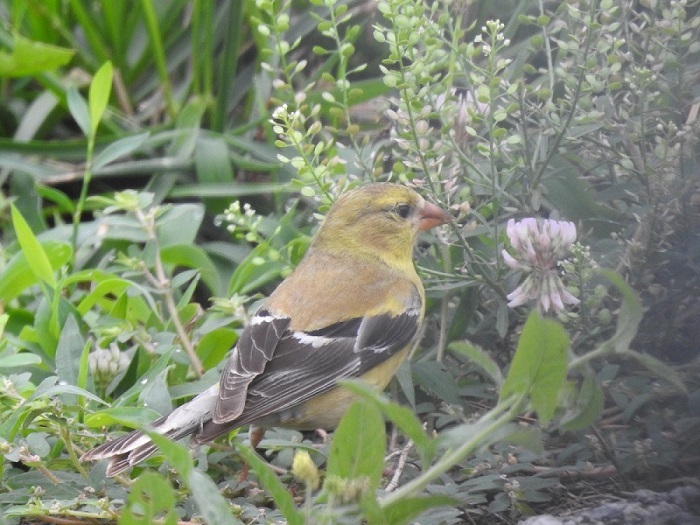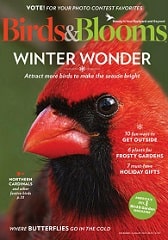Identifying the Female American Goldfinch and Her Behaviors
Here's an in-depth look at the appearance and behaviors of the female species of this backyard bird.
Appearance

Female Goldfinch Searching for Seeds
In spring, female American Goldfinches don't boast the bright yellow feathers of the males. Instead, they wear a more subdued olive-brown or dull yellow plumage.
This muted coloration helps them blend into their surroundings, particularly when nesting.
Their wings are dark with white bars, and they have a slightly notched tail.
As the breeding season approaches, their feathers brighten a bit, though never as vibrant as the males.
Come winter, they molt into an even duller, brownish hue, perfect for blending in with bare branches and snow.
Behavior
The behaviors of female American Goldfinches are distinctly different from those of the males:
Nesting: Females are the architects of the nest. They choose a site, usually in a shrub or tree, and build a sturdy, flexible cup-shaped nest using plant fibers, spider silk, and other natural materials.
They lay between 4 to 6 pale blue eggs and incubate them alone for about two weeks, during which the males often bring food.
Breeding: After the eggs hatch, the females, with some help from the males, feed the chicks. If a second brood is needed, she builds a new nest.
| American Goldfinch Nesting Timeline | |
|---|---|
| Eggs | 3 - 6 |
| Incubation | 12 - 14 days |
| Nestling Phase | 11- 15 days |
| Broods | 1 - 2 |
Diet and Feeding Habits
While both genders feed on seeds, females have a particular fondness for seeds from plants like thistles, sunflowers, and asters.
Their agile beaks make it easy for them to extract seeds. They favor seeds from sunflowers, dandelions, and ragweed.
During winter, they turn to seeds from birches, alders, and various grasses.
Occasionally, they also eat insects, especially during the breeding season to provide extra protein for their young.
Vocalizations
While not as vocal as the males, female American Goldfinches have their own set of calls.
These include high-pitched notes often described as "po-ta-to-chip," used to communicate with mates and chicks, particularly during feeding.
Habitat
Female American Goldfinches are found across North America, from southern Canada to northern Mexico.
They thrive in areas with open fields, meadows, and wooded edges.
Some populations migrate, while others stay in the same area year-round, depending on food availability.
Reproduction
Female American Goldfinches have a unique reproductive cycle.
They start breeding late in the season, usually in late June or early July, coinciding with the peak availability of seeds from plants like thistles.
Females handle most of the incubation, with males assisting by feeding them and later the chicks.
Despite their strong bonds, American Goldfinches do not mate for life and may switch partners within the same season if nesting attempts fail.
Are They Rare?
These birds are not considered threatened or rare. Their populations are stable, thanks to their adaptability and the widespread availability of their preferred habitats and food sources.
Human activities that create open fields and backyard bird feeders also benefit them.
Interesting Facts
Molting: Female American Goldfinches molt twice a year, an unusual trait among songbirds, ensuring their feathers are in top condition for both winter and summer.
Social Structure: Outside the breeding season, females often join mixed flocks with other small birds, which helps protect them from predators.
By providing Nyjer seed or Black-oil Sunflower seed in winter, you can attract these delightful birds to your backyard.
They might visit less during the summer breeding season but will return with their young in tow once fledging is complete.



